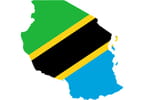DRUMHELLER, Canada – In an article published today by Current Biology, researchers at the Royal Tyrrell Museum of Palaeontology have announced the discovery of a new dinosaur species in the province of Alberta, Canada, a region known globally as one of the richest sources of dinosaur fossils in the world. The announcement follows the discovery of a nearly complete fossilized skull of a previously unseen horned dinosaur in the province’s southwest.
“I like to joke that you can recognize it as being a new species from 100 meters away,” commented Dr. Caleb Brown, Post-doctoral Fellow at the Royal Tyrrell Museum and co-author of the Current Biology article announcing the discovery.
The dinosaur, a member of the Ceratopsidae family whose official name is Regaliceratops peterhewsi meaning ‘royal horned face,’ is notably different from other known relatives in both the size and shape of the horns on its face and a distinctive, crown-like frill at the back of its skull. The beaked, herbivorous dinosaur dates from the Cretaceous period, a time that saw the highest diversity of ceratopsian dinosaurs.
Dr. Brown explained, “The discovery is scientifically significant because it provides evidence of unexpected evolutionary traits in horned dinosaurs.”
The fossil specimen, nicknamed ‘Hellboy’ by its researchers in reference both to the horns above its eyes reminiscent of the Dark Horse comic book character of the same name, as well as the gruelling, multi-year process of excavation, preparation and study, was first discovered in a cliff near the Oldman River by a member of the public. The find was reported to the Royal Tyrrell Museum of Palaeontology, who then assigned a team to retrieve and research it. Led by Dr. Donald Henderson, Curator of Dinosaurs, the excavation of the site took place over two summers, while preparation in the museum’s laboratory took an additional 18 months.
Now, as the centrepiece of the Royal Tyrrell Museum’s new Fossils in Focus exhibit, the skull will be on display to museum visitors beginning Thursday, June 4, 2015.
“The rate at which we are finding new species today is higher than any time previously. It is a very exciting time for dinosaur research in Alberta,” said Dr. Brown.
For dinosaur lovers who want to follow in the footsteps of palaeontologists, Alberta’s Dinosaur Provincial Park offers 1, 2 and 3-day guided excavation programs in which participants take part in real dinosaur digs that contribute to ongoing scientific research at the Royal Tyrrell Museum.
For more information about how you can experience Alberta’s incredible prehistoric past, click here.
About Fossils in Focus
Fossils in Focus is a new feature gallery that provides visitors with the chance to learn about some of the most significant specimens of the Royal Tyrrell Museum’s collections. Designed to be a space that can evolve with our changing understanding of palaeontology, this rotating exhibit will highlight some of our most remarkable and scientifically significant fossils. New specimens reflecting current research will be also be featured as new discoveries are unveiled, which gives us a timely way for visitors to interact with specimens after their discovery or publication.
About The Royal Tyrrell Museum
The Royal Tyrrell Museum is located near Drumheller, Alberta, approximately 1.5 hours northeast of Calgary. It houses one of the world’s largest displays of dinosaurs and is Canada’s only museum dedicated exclusively to the science of palaeontology.
WHAT TO TAKE AWAY FROM THIS ARTICLE:
- In an article published today by Current Biology, researchers at the Royal Tyrrell Museum of Palaeontology have announced the discovery of a new dinosaur species in the province of Alberta, Canada, a region known globally as one of the richest sources of dinosaur fossils in the world.
- By its researchers in reference both to the horns above its eyes reminiscent of the Dark Horse comic book character of the same name, as well as the gruelling, multi-year process of excavation, preparation and study, was first discovered in a cliff near the Oldman River by a member of the public.
- For dinosaur lovers who want to follow in the footsteps of palaeontologists, Alberta’s Dinosaur Provincial Park offers 1, 2 and 3-day guided excavation programs in which participants take part in real dinosaur digs that contribute to ongoing scientific research at the Royal Tyrrell Museum.






















